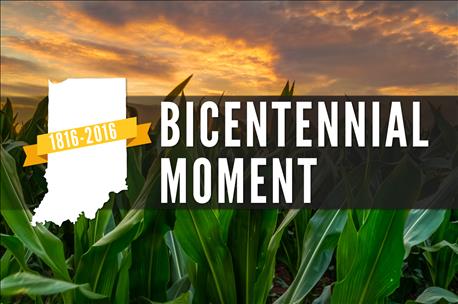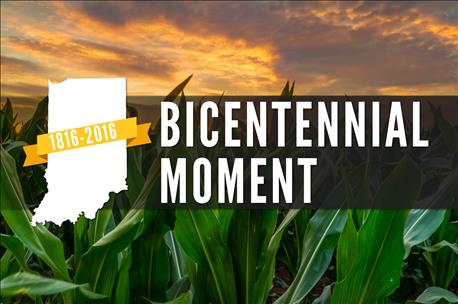
If you haven’t ordered your copy of “Enriching the Hoosier Farm Family: A Photo History of Indiana’s Early County Extension Agents,” there’s still time to do so. This coffee table-sized book would make a great Christmas gift.
It’s also a great record of the early days of Indiana agriculture as the state celebrates its bicentennial year. Before Indiana gained national prominence as a tech-savvy ag state, there were pioneers, both farmers and county Extension agents, who paved the way. Many nearly jump off the pages in this historical book.

Authored by Purdue University Pesticide Program Director Fred Whitford, with Neil Harmeyer and David Hovde, the book captures the Hoosier spirit in the early part of the 20th century.
You can order the book from Purdue University Press at press.purdue.edu.
Here are two examples of early Indiana agriculture captured in the book.
1. Farmers harvested seed corn for next year in Morgan County.
Selecting seed corn for the next year by hand in the fall was still a time-honored practice in 1931. Hybrid seed corn would come in just a few years. In the meantime, boys from the vocational agriculture program at Monrovia High School went to the field to practice seed corn selection. Each carried a sack over his shoulder to fill with ears worth keeping.
Documented by Morgan County records, the boys selected seed on Cecil McCollum’s farm in Monroe Township. The corn was planted in hills in a checked pattern. There were 3,556 hills per acre.
Monrovia High School discontinued agriculture education in the late 1900s and then restarted the program in 2015. The Monrovia FFA Chapter is active again.

TRUE TRAINING: These agriculture students from Monrovia High School received a firsthand lesson in harvesting seed corn in 1931. (Photo courtesy of Fred Whitford, Purdue University Pesticide Programs)
2. Cornhusking contests drew huge crowds in the 1930s.
There may not have been much money in farming in the 1930s, but there was still a competitive spirit. The 1931 state cornhusking contest at the Dale Rademaker farm in Miami County drew 50,000 people and some 10,000 cars, many of which looked almost exactly alike. It resembled a crowd scene from early Farm Progress Shows. In fact, the first Farm Progress Show in 1953 came about after cornhusking contests were discontinued.
The Graham farm in Daviess County hosted the state cornhusking event in 1937. More than 50,000 people crowded onto the farm. Albert Hensler of Howard County husked 38 bushels of corn in 80 minutes to win the contest. The 1939 contest was held at the Smeltzer farm in Howard County.
About the Author(s)
You May Also Like




